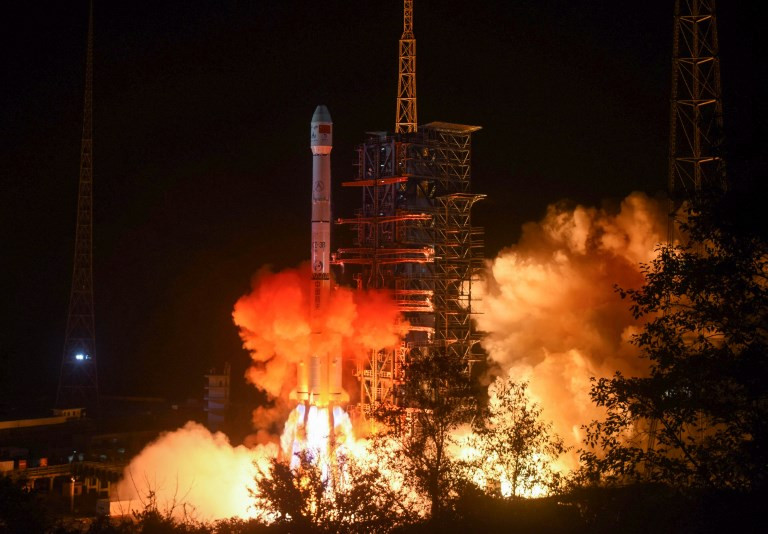Popular Reads
Top Results
Can't find what you're looking for?
View all search resultsPopular Reads
Top Results
Can't find what you're looking for?
View all search resultsChina lands probe on dark side of moon
The Chang'e-4 probe landed at 10:26 am Beijing time (0226 GMT) and sent a photo of the far side of the moon to the Queqiao satellite, which will relay communications to controllers on Earth, state broadcaster CCTV said.
Change text size
Gift Premium Articles
to Anyone
 This file picture taken early on December 8, 2018 shows a Long March 3B rocket, transporting the Chang'e-4 lunar rover, lifting off from the Xichang launch centre in Xichang in China's southwestern Sichuan province. China's Chang'e-4 lunar rover landed on the far side of the moon on January 3, 2019, the first probe to do so, state broadcaster CCTV reported.
(Agence France Presse/STR)
This file picture taken early on December 8, 2018 shows a Long March 3B rocket, transporting the Chang'e-4 lunar rover, lifting off from the Xichang launch centre in Xichang in China's southwestern Sichuan province. China's Chang'e-4 lunar rover landed on the far side of the moon on January 3, 2019, the first probe to do so, state broadcaster CCTV reported.
(Agence France Presse/STR)
A
Chinese lunar rover landed on the dark side of the moon on Thursday, in a global first that boosts Beijing's ambitions to become a space superpower.
The Chang'e-4 probe landed at 10:26 am Beijing time (0226 GMT) and sent a photo of the far side of the moon to the Queqiao satellite, which will relay communications to controllers on Earth, state broadcaster CCTV said.
Beijing is pouring billions into its military-run space programme, with hopes of having a crewed space station by 2022, and of eventually sending humans to the moon.
The Chang’e-4 lunar probe mission – named after the moon goddess in Chinese mythology – launched last December from the southwestern Xichang launch centre.
It is the second Chinese probe to land on the moon, following the Yutu (Jade Rabbit) rover mission in 2013.
More China-EU space program co-op expected as Chang'e-4 probe prepares for moon-landing pic.twitter.com/3TvoWgQDBF
— China Xinhua News (@XHNews) December 30, 2018
Unlike the near side of the moon that always faces the earth and offers many flat areas to touch down on, the far side is mountainous and rugged.
The Chang'e-4 probe is carrying six experiments from China and four from abroad, and includes low-frequency radio astronomical studies -- aiming to take advantage of the lack of interference on the far side.
The rover will also conduct mineral and radiation tests, the China National Space Administration said according to state news agency Xinhua.










